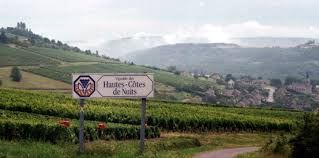Dom Mongeard-Mugneret, Les Dames Huguettes 2010 Hautes-Côtes de Nuits

From €18, $27, £19.95, HK$228, Sing$38, AU$45
Gone are the days when the Hautes-Côtes, the pretty hills just west of the Côte d'Or, produce only tart wine and cassis to put in it. Thanks to climate change, the Hautes-Côtes are becoming seriously interesting hunting ground, not least now that prices of the smart stuff have taken off in a moonwards direction. And in any case the Dames Huguettes, just off the road from Nuits to the village of Chaux, is so close to the Côte d'Or that it falls within the boundaries of Nuits-St-Georges.
When I was researching an article about Paris cavistes recently, I asked those who specialised in burgundy where they were looking to fill their more modest slots in their burgundy ranges and several mentioned the Hautes-Côtes. I came across this luscious example when tasting my way through a 500-strong presentation of just some of the wines imported into the UK by Liberty Wines. Domaine Mongeard-Mugneret is revered in Australia but has never had a particularly strong presence in the British market.
In my burgundy bible, Inside Burgundy, Jasper Morris MW is rather dismissive: 'This domaine enjoyed an excellent reputation in the 1970s and 1980s in the hands of Jean Mongeard, whose career began in 1945. I particularly remember an exciting 1983 Échezeaux and some succulent 1985s. Today the wines do not quite have the same class – perhaps because the 30-hectare domaine is too large to be easily managed.' His fellow Master of Wine Clive Coates is more generous. His much longer account in his The Wines of Burgundy published in 2008 ends, 'The wines are much better than they were 15 years ago.' He pointed out that under Jean's son Vincent, the wines were for some time too aggressively oaky but that since 1998 he buys and seasons the oak himself, much to the benefit of the wines.

Mongeard-Mugneret's Dames Huguettes bottling from the very respectable 2010 vintage (see our Burgundy vintage notes ) is drinking beautifully already and I should think will continue to satisfy those looking for that rare beast, a burgundy bargain, for the next three years or so. I found it had real nerve and excitement (2010s are not short of acidity) but was also complex and satisfying. I'm not mad about the label but I suppose you can't have everything.
These are the producer's notes on the growing season and vinification:
December saw winter frosts and January and February were just as cold with a lot of snow. March and April brought above-normal temperatures and lots of sunshine encouraging good bud development. May was cloudy and cool before temperatures rose in early June. The end of flowering was around 22 June after a significant drop in temperatures. The changeable conditions caused coulure (where flowers and young grapes fall off the vines) and millerandage (where young grapes fail to mature), severely reducing the harvest. Variable weather conditions continued throughout July to September. Sunshine hours were higher than normal. The smaller crop meant smaller but riper grapes, with good concentration and acidity. Harvest began on 24 September.
The grapes were de-stemmed and underwent a cold maceration for 4-5 days. Fermentation took place in stainless steel tanks at 30 ºC for 12-15 days. A gentle pressing of the grapes was made to extract a good level of tannins. The free-run juice and the press juice were unified in stainless steel tanks before being run off by gravity into French oak barrels, a portion of which were new. The wine underwent malolactic fermentation and was then aged for a period of 18-22 months before being bottled without filtering.
I'm delighted to see that this wine can be found from several retailers in the UK (including Slurp.co.uk) as well as in France, Italy, the US, Singapore, Hong Kong and of course Australia.
Become a member to view this article and thousands more!
- 15,412 featured articles
- 275,117 wine reviews
- Maps from The World Atlas of Wine, 8th edition (RRP £50)
- The Oxford Companion to Wine, 5th edition (RRP £50)
- Members’ forum
- 15,412 featured articles
- 275,117 wine reviews
- Maps from The World Atlas of Wine, 8th edition (RRP £50)
- The Oxford Companion to Wine, 5th edition (RRP £50)
- Members’ forum
- 48-hour preview of all scheduled articles
- Commercial use of our wine reviews
